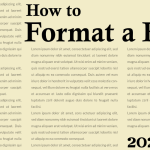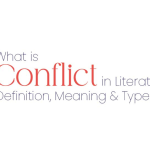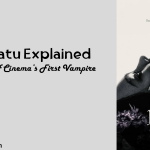Few components in the broad domain of storytelling are as fascinating and nuanced as the unreliable narrator. But what precisely is an untrustworthy storyteller? A character who relates a story with a lack of veracity or credibility is, to put it simply, an unreliable narrator.
This may be the result of a number of factors, such as willful lying, mental instability, or ignorance. A vital literary device is the unreliable narrator, which forces readers to examine the story and look for the real meaning behind the words.
Characteristics of an Unreliable Narrator
Subjectivity: One key characteristic of an unreliable narrator is their subjectivity. This means that their personal feelings, opinions, and biases influence how they tell the story.
Unlike objective narrators who present facts impartially, an unreliable narrator’s version of events is colored by their emotions and perspectives. This subjectivity can make it hard for readers to discern the truth, adding a layer of mystery and complexity to the narrative.
Limited Knowledge: An unreliable narrator frequently has little awareness of the story’s events or other characters. Their age, mental health, or point of view may be the cause of this limitation, which leaves gaps in their knowledge.
A kid narrator, for instance, can misunderstand adult interactions, while a character suffering from amnesia might forget important details. This limited point of view may make readers doubt the narrator’s veracity and truthfulness.
Deception: An unreliable narrator frequently employs deceit to trick the audience. This may be embellishing the reality to suit their viewpoint, concealing important information, or lying about what actually happened.
It is difficult for readers to trust the unreliable narrator’s narrative since they give a partial or biased version of the story, which breeds suspense and mistrust. An essential characteristic of an untrustworthy narrator is their dishonest behavior.
You may also read: Book Cover Sizes: What are the Right Dimensions for Your Book?
Types of Unreliable Narrators
An unreliable narrator is a kind of untrustworthy narrator whose own mental condition causes them to see reality distortedly. Even if their version of events differs from what other people consider to be true, they sincerely believe it to be true.
Their narration may become ambiguous and confused as a result. For example, the narrator in Edgar Allan Poe’s The Tell-Tale Heart misinterprets his own actions and surroundings due to his madness.
The Liar
A “Liar” is a kind of untrustworthy narrator who purposely misleads the audience or other characters in the narrative. In order to forward their own agenda, this narrator bends the facts, which frequently results in unexpected turns and disclosures.
Because of the liar’s dishonesty, readers are left feeling uneasy and wondering what is true. An unreliable narrator of this kind gives the story more depth and intrigue, which increases the reader’s interest.
The Child or Innocent
An unreliable narrator often takes the form of a child or someone innocent. Due to their limited understanding of the world, they misinterpret events, leading readers to question the truth.
This type of unreliable narrator offers a unique perspective, as their naivety and honesty can reveal hidden truths while obscuring others. Examples include Scout Finch in “To Kill a Mockingbird” and Huckleberry Finn in “The Adventures of Huckleberry Finn.”
The Mentally Ill
A mentally ill character whose mental health problems cloud their sense of reality is an unreliable narrator whose credibility is called into question. An untrustworthy narrator of this kind frequently suffers from mental illnesses such severe depression, paranoia, or schizophrenia.
Their skewed perspectives may cause readers to wonder if the narrative is actually accurate. Readers must piece together the actual events themselves thanks to the depth and intrigue provided by the mentally ill and unreliable narrator.
You may also like: Third Person Point of View vs. First Person: Which is Right for Your Story?
Historical Context
Early Examples in Literature
One of the earliest examples of an unreliable narrator in literature is Geoffrey Chaucer’s “The Canterbury Tales,” written in the late 14th century. Chaucer’s narrators often provide biased, exaggerated, or incomplete accounts of their stories.
Another classic example is Edgar Allan Poe’s “The Tell-Tale Heart” (1843), where the narrator’s madness distorts his perception of reality. These works showcase how unreliable narrators can add depth and intrigue to storytelling.
Evolution over Time
It’s important to comprehend how “Unreliable Narrator” has changed throughout time in order to fully explore its historical context. In literature, the idea of an untrustworthy narrator has changed dramatically.
When stories were first told, they were usually told from reliable points of view that readers could count on to deliver the truth. But as storytelling techniques advanced, writers experimented with narrators who might deceive readers, whether on purpose or accidentally.
By upending established storytelling conventions, this evolution gives readers fresh viewpoints and a deeper understanding of the subtleties of perception and narrative reality.
Famous Examples of Unreliable Narrators
Classic Literature
Holden Caulfield in “The Catcher in the Rye”
Holden’s cynical and jaded view of the world makes him a quintessential unreliable narrator. His narrative is filled with contradictions and questionable insights, reflecting his troubled state of mind.
Nick Carraway in “The Great Gatsby”
While Nick appears reliable at first glance, his partiality towards Gatsby and his own moral ambiguities make his account less than trustworthy.
Modern Literature
Amy Dunne in “Gone Girl”
Amy’s manipulation of her narrative in “Gone Girl” creates a gripping and unpredictable story, showcasing the power of an unreliable narrator.
Patrick Bateman in “American Psycho”
Patrick’s warped perception of reality and his sociopathic tendencies make his narration both horrifying and unreliable, leaving readers questioning the truth behind his violent actions.
You may also read: What is an Anti-Villain? Definition, Tips, and Examples
Impact on the Reader
Creating Suspense and Mystery
Using an unreliable narrator to build tension and mystery can captivate readers. By raising questions about the veracity or perception of the narrator, the narrative takes on a riddle that readers must figure out.
This unpredictability keeps readers interested, making them doubt every aspect and look forward to surprises that contradict their presumptions, which heightens the story’s allure and unpredictability.
Engaging the Reader
When discussing the idea of an unreliable narrator, it is important to keep the reader interested. The reader is forced to separate perception from reality by reading a story through the eyes of a character whose reliability is called into question.
This strategy draws readers in by provoking them to consider motives and specifics, resulting in a dynamic reading experience that is suspenseful and full of mystery.
Ethical and Moral Implications
The perception of an unreliable narrator by readers is significantly influenced by ethical and moral consequences. The integrity of narrative is called into question when a narrator presents an inaccurate or distorted version of events.
This can lead to more in-depth discussion of issues like perspective, deception, and the effects of shaky narration on how we perceive reality and the truth.
You may also read: How to Become an Author in 2024: An Essential Guide for Beginners
Techniques Authors Use to Create Unreliable Narrators
First-Person Point of View
First-person point of views are frequently used in literature by authors to create characters who are unreliable narrators who could manipulate or misrepresent their story.
This method enables readers to view events from the narrator’s skewed or inaccurate point of view. These narrators create how information is viewed by employing “I” or “me,” which frequently results in a story where truth becomes arbitrary and interpretation is essential.
Stream of Consciousness
Using a technique known as “stream of consciousness,” writers can depict the unbroken flow of ideas and emotions from a character’s head without resorting to a conventional narrative framework.
By drawing readers fully into the narrator’s viewpoint and frequently fusing fact and subjective opinion, this technique heightens the uncertainty typical of an unreliable narrator.
Fragmented Narrative
Authors frequently use the method of a fragmented narrative in storytelling to create an unreliable narrator. This technique involves telling the story in fragmented or inconsistent chunks, leaving the reader to wonder if the events described are accurate due to narrator memory or comprehension gaps. This ambiguity heightens the suspense in the story and challenges readers to consider the narrator’s credibility.
You may also read: Why You Should Use Professional Book Marketing?
Benefits of Using Unreliableb Narrators
Depth and Complexity
Depth and Complexity add intrigue to stories with unreliable narrators. By presenting skewed perspectives or withholding key information, these narrators challenge readers to analyze events critically.
This technique enhances suspense and encourages deeper exploration of characters and plot twists, making the narrative more engaging and thought-provoking.
Emotional Engagement
One major benefit of employing unreliable narrators in narrative is emotional connection. These storytellers frequently provide distinctive viewpoints and unexpected turns that captivate readers or viewers.
Audiences are lured into a deeper investigation of persons and events by doubting the veracity of the narrator’s story, creating a more engaging and thought-provoking experience.
Unique Perspectives
Stories are enhanced by the distinct viewpoints that unreliable narrators provide, which depict events from faulty or subjective angles. This approach of telling a story gives it depth and mystery, making readers wonder if the characters and events in the story are really true.
Because of its ambiguity, “Unreliable Narrator” becomes an essential component of literary analysis and narrative, encouraging critical thinking and increasing reader engagement with the mysteries of the storyline.
Conclusion
In conclusion, the concept of an unreliable narrator enriches storytelling by introducing complexity, suspense, and moral ambiguity. Whether they are deceiving readers or simply misinterpreting events, these narrators invite us to question truth and perception in narratives, making for compelling and thought-provoking literature.
















